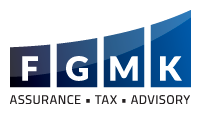Contact: Charles F. Schultz III
INDIVIDUAL TAXATION
The Act simplifies the Internal Revenue Code (the “Code”) for individuals by consolidating various exemptions and deductions into a larger Standard Deduction. The Act does not make changes with respect to the maximum rate for capital gains and qualified dividends. The Act lowers overall income tax rates but does not reduce the number of brackets. The Act does eliminate the individual mandate tax related to the Affordable Care Act.
Tax Rates. The tax brackets and rates below expire and revert to the previous rates beginning in 2026.
The New Tax Brackets are as follows:
For Joint Filers (based on taxable income):
- 10% from $0 to $19,050
- 12% from $19,050 to $77,400
- 22% from $77,400 to $165,000
- 24% from $165,000 to $315,000
- 32% from $315,000 to $400,000
- 35% from $400,000 to $600,000
- 37% from $600,000 and above
For Single Filers:
- 10% from $0 to $9,525
- 12% from $9,525 to $38,700
- 22% from $38,700 to $82,500
- 24% from $82,500 to $160,000
- 32% from $160,000 to $200,000
- 35% from $200,000 to $500,000
- 37% from $500,000 and above
Repeal of ACA Individual Mandate: The individual mandate under the Affordable Care Act is repealed.
“Kiddie Tax” Changes: Both the ordinary and capital unearned income of a child will be taxed at the same rates as applied to trusts and estates.
Standard Deduction. This provision will expire and revert to the previous system in 2026.
- Increased Standard Deduction: The Standard Deduction for individuals is increased as follows:
- For Single Individuals, to $12,000.
- For a Head of Household, to $18,000
- For Married Joint return, to $24,000.









